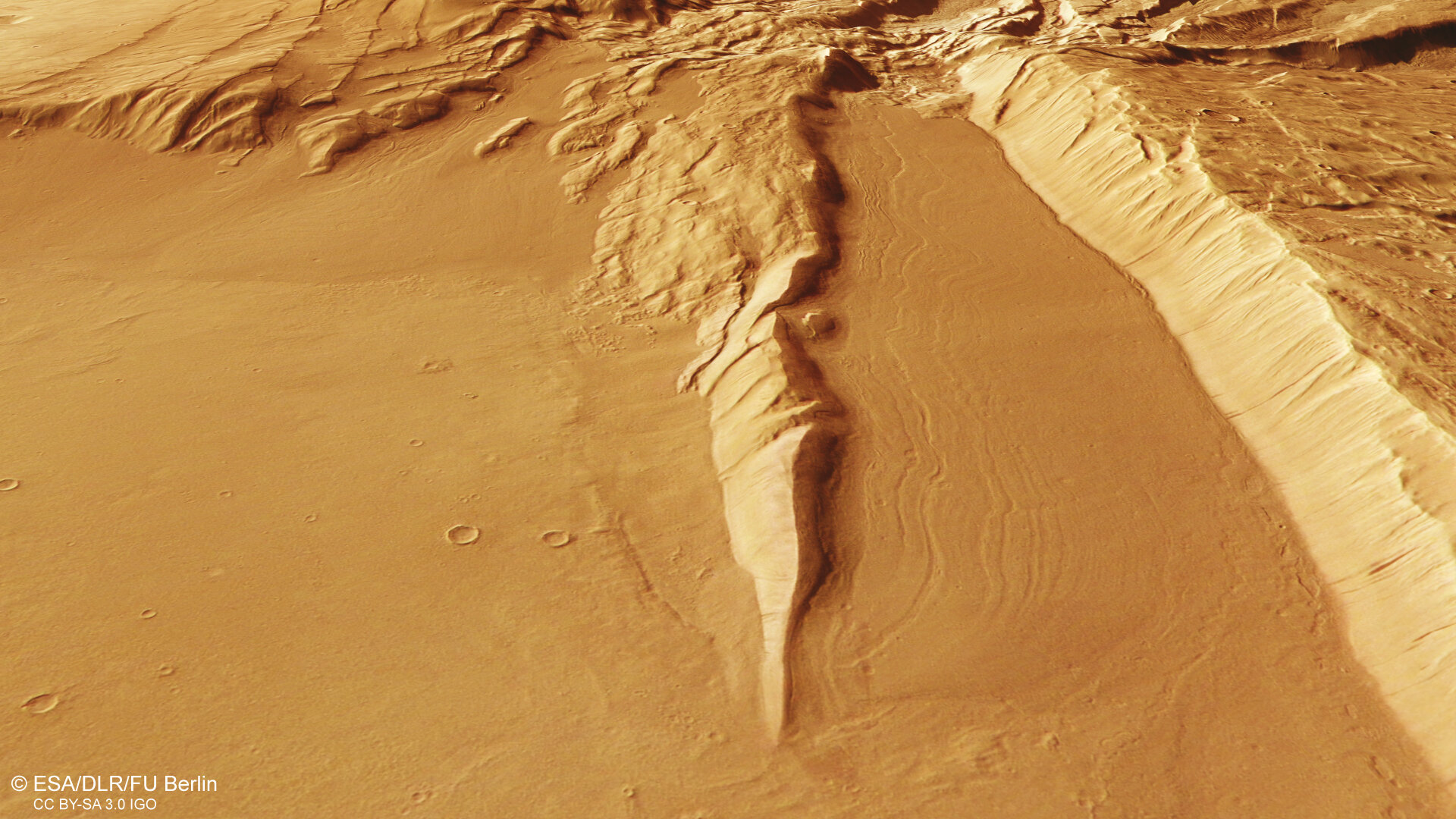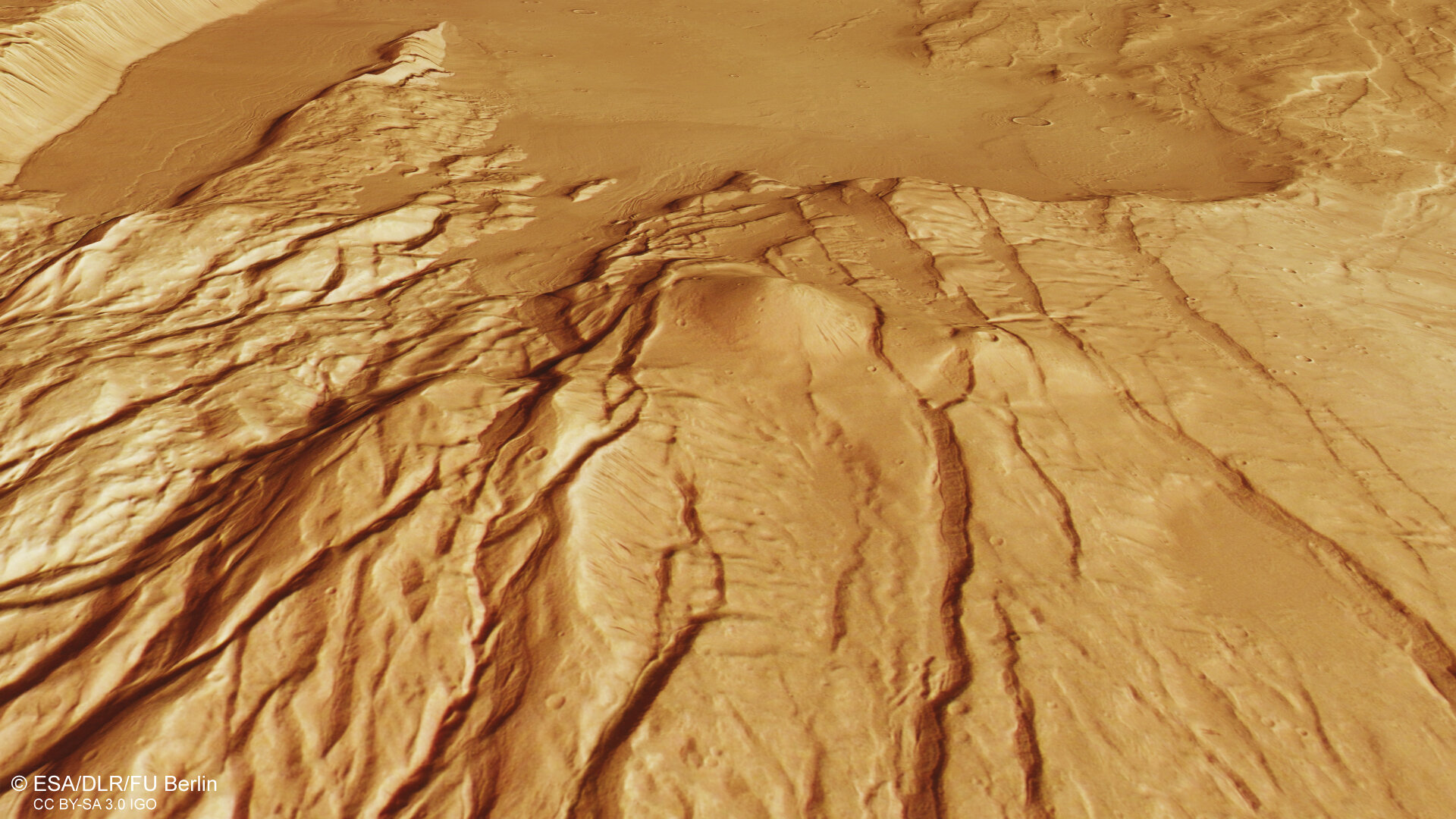The European Space Agency (ESA) has published new images taken by the Mars Express spacecraft. They show two different “faces” of the Red Planet.

Mars is known for its dichotomy. In fact, the planet is divided into two parts. The Northern Hemisphere is actually a giant depression covered with solidified lava and has a relatively smooth topography. The southern part of Mars is characterized by a much older relief, mottled with a huge number of craters and various geological formations, indicating its extensive age.
Both of these two types of terrain are represented in a new image taken by the Mars Express spacecraft’s stereo camera. Known as the Acheron Fossae region, this section of the Red Planet is relatively close to two Martian supervolcanoes out of the frame: the famous Mount Olympus, located 1,200 kilometers to the south (left of the original image), and Mount Alba, located about the same distance to the northeast (bottom right).

Together with crustal stretching, the supervolcanoes shaped the appearance of this region at a time when Mars was a much more active planet than now. The depressions occupying the right third of the frame are known as grabens. They formed nearly four billion years ago when parallel blocks of Martian crust stretched and pulled apart. As a result, a system of ridges was formed stretching for about 800 kilometers, a distance comparable to the distance from Poltava to Lviv.
The smooth, uncut area in the lower center part of the original image is the beginning of younger plains extending from Acheron Fossae. Closer to the grabens, signs of past glacial activity are visible in the form of rock accumulations as well as structures resembling waves crashing on the shore.

The flat and smooth land farther away from the cliffs was probably formed by the activity of Mount Alba, whose lava once flooded the area. Lava flows have hidden the old impact crater below, whose outline is still visible as a half-arc in the center of the frame. It was estimated to be 28 kilometers in diameter.

Three conical peaks several kilometers high are also visible in the upper right of the main image. According to scientists, these are volcanic domes. Grabens cut through some of them, indicating that the crust there was split and deformed already after they formed.
Earlier we reported on how the Mars Express photographed a white Christmas on Mars.
According to ESA


